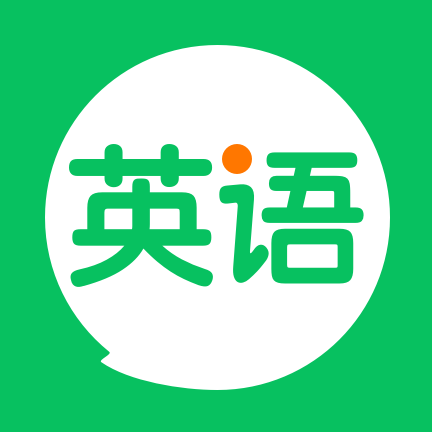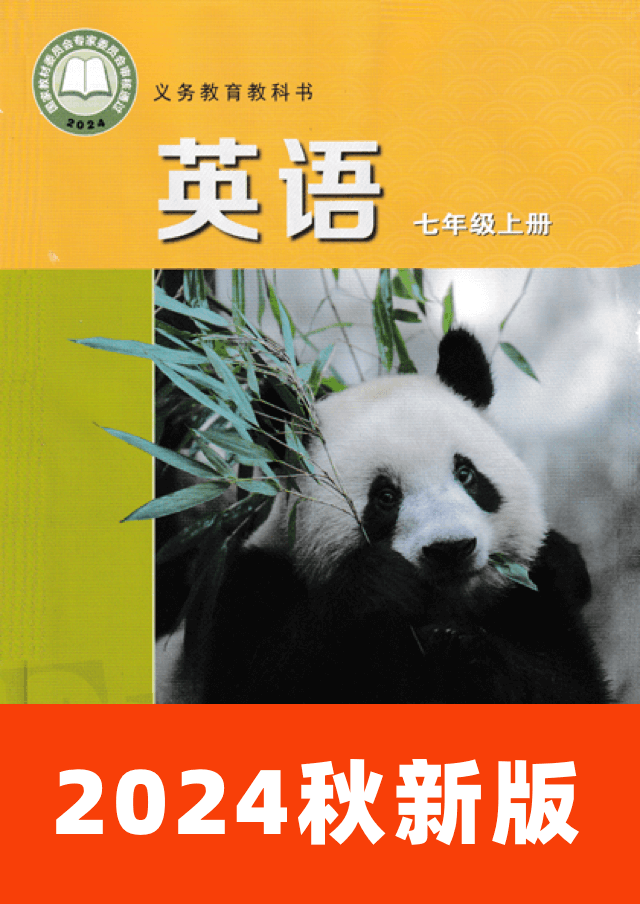英语冀教版(新)七年级上册课文目录
Unit 6 Let's go!课文翻译及听力音频
Unit 6 Let's go! 翻译:第六单元 我们走吧!
Towards the end of this unit study, you will be able to: 翻译:在本单元学习结束时,你将能够:
describe the places you like; 翻译:描述你喜欢的地方;
ask for and give directions; 翻译:问路和指路;
talk about shopping and ordering food; 翻译:谈论购物和点餐;
ask for permission using can and may. 翻译:使用can和may请求许可。
A journey of a thousand miles begins with a single step. — Lao Tzu 翻译:千里之行,始于足下。 ——老子
Lesson 1 On the way to the bookstore 翻译:第1课 在去书店的路上
Look at the pictures and write the names of the places. 翻译:看图写地名。
Listen to the conversation and tick the correct map. 翻译:听对话,勾出正确的地图。
It's Saturday afternoon. 翻译:今天是星期六下午。
I'd like to go to the bookstore tomorrow. 翻译:我明天想去书店,
Would you like to go with me? 翻译:你愿意和我一起去吗?
I'd love to, but I am going to visit my grandparents tomorrow morning. 翻译:我很想去,但我明天上午要去看望我的祖父母。
How about in the afternoon? 翻译:那下午怎么样?
That works for me. 翻译:我觉得可以。
It's a little far. 翻译:书店有点远。
We can go by underground, and then walk about 10 minutes. 翻译:我们可以坐地铁去,然后再走10分钟就到了。
It's Sunday afternoon. 翻译:今天是周日下午。
They come out of the station, and ask a passer-by for directions. 翻译:他们从车站出来,向路人问路。
Excuse me, madam. 翻译:打扰一下,女士。
We are looking for Chengming Bookstore. 翻译:我们在寻找成明书店。
Can you show us the way? 翻译:你能告诉我们怎么走吗?
Oh, go down Zhongshan East Road. 翻译:哦,顺着中山东路走,
Turn right at the traffic lights. 翻译:在红绿灯处右转。
The museum will be on your right. 翻译:博物馆就在你的右边。
Then go straight and turn right to Fanxi Road. 翻译:然后直走,右转进入繁西路。
You will see the bookstore on your left, next to the library. 翻译:你会看到书店在你的左边,在图书馆旁边。
Thanks for your help! 翻译:感谢你的帮助!
You're welcome. 翻译:别客气。
Unit 6 翻译:第六单元
A 翻译:
B 翻译:
C 翻译:
Listen to the conversation again and write the names of the places on the map. 翻译:再听一遍对话,并在地图上写出地名。
West Street 翻译:西街
Subway 翻译:地铁
East Street 翻译:东街
Zhongshan East Road 翻译:中山东路
Science and Technology Centre 翻译:科技中心
Supermarket 翻译:超市
Hotel 翻译:酒店
Hospital 翻译:医院
Yucai Street 翻译:育才街
Fanxi Road 翻译:繁西路
Library 翻译:图书馆
Work in pairs. 翻译:两人一组。
Look at the map in Activity 3 and talk about the way to the places. 翻译:根据活动3中的地图,讨论去这些地方的路线。
Excuse me. 翻译:打扰一下。
Where is the supermarket? 翻译:超市在哪里?
Go down Zhongshan East Road and turn right at the second traffic lights. 翻译:沿着中山东路走,在第二个红绿灯处右转。
Then go straight and you will see the supermarket on your right. 翻译:然后直走,你会看到超市在你的右边。
Useful expressions 翻译:实用表达
go down/straight 翻译:沿着……/直行
turn left/right 翻译:左转/右转
on your left/right 翻译:在你的左边/在你的右边
Listen and repeat. 翻译:边听边跟读,
Write more words in each group. 翻译:在每组中写出更多单词。
/aɪ/ 翻译:/aɪ/
right 翻译:向右
light 翻译:灯
morning 翻译:早上
sport 翻译:运动
/s/ 翻译:/s/
see 翻译:看
subway 翻译:地铁
Lesson 2 At the museum 翻译:第2课 在博物馆
What kinds of museums are they? 翻译:它们是哪种类型的博物馆?
Talk with your partner. 翻译:与伙伴交流交流。
Read the conversation and answer the questions. 翻译:阅读对话并回答问题。
Li Ming and Jack are at the museum. 翻译:李明和杰克在博物馆。
Jack, where are we going first? 翻译:杰克,我们先去哪儿?
Hmm... 翻译:嗯……
I don't know. 翻译:我不确定。
Do you have any ideas? 翻译:你有什么想法吗?
How about the Ancient China Hall? 翻译:去古代中国展厅怎么样?
It shows some ancient Chinese history. 翻译:那里展示了一些古代中国的历史。
Good idea. 翻译:好主意,
But where is it? 翻译:但它在哪?
Let's ask that gentleman. 翻译:我们来问问那位先生,
Maybe he knows the way. 翻译:或许他认识路。
Excuse me. 翻译:打扰一下。
We are looking for the Ancient China Hall. 翻译:我们在找古代中国展厅。
Can you help us? 翻译:你能帮帮我们吗?
Yes. 翻译:可以。
Go down the stairs and pass the gift shop. 翻译:沿着楼梯往下走,经过礼品店,
Then turn left. 翻译:然后左转。
You can't miss it. 翻译:你们不会错过的。
Thank you. 翻译:谢谢。
You're welcome. 翻译:别客气。
Let's go. 翻译:走吧。
I want to see the Jade Dragon from Hongshan Culture. 翻译:我想看看来自红山文化的玉龙。
It's famous. 翻译:它很有名。
I can't wait! 翻译:我迫不及待了!
Then I want to buy some gifts at the gift shop. 翻译:然后我想在礼品店买些礼物。
What can they learn in the Ancient China Hall? 翻译:他们在中国古代展厅能了解到什么?
What does Li Ming want to see? 翻译:李明想要参观什么?
After asking the way, where will they go first? 翻译:询问路线后,他们会先去哪里?
Unit 6 翻译:第六单元
Complete the conversation with the sentences, and then role-play it. 翻译:用下面的句子完成对话,然后进行角色扮演。
Excuse me. 翻译:打扰一下。
I'm looking for the Natural History Museum. 翻译:我在找自然历史博物馆。
Can you help me? 翻译:你可以帮助我吗?
Sorry, I'm new here. 翻译:对不起,我是新来的。
You can ask the police officer over there. 翻译:你可以问那边的警官。
Thank you. 翻译:谢谢。
Excuse me. 翻译:打扰一下。
Where is the Natural History Museum? 翻译:自然历史博物馆在哪里?
Go along the street and turn right at the bakery. 翻译:沿着这条街走,到面包店右转。
Then turn left at the bookstore. 翻译:然后在书店左转。
You will see it on the right. 翻译:你会看到它在右边。
Is it far from here? 翻译:离这里远吗?
No. 翻译:不。
It's only about ten minutes' walk. 翻译:只需要步行大约十分钟就到了。
You will see it on the right. 翻译:你会看到它在右边。
Can you help me? 翻译:你可以帮助我吗?
It's only about ten minutes' walk. 翻译:只需要步行大约十分钟就到了。
Where is the Natural History Museum? 翻译:自然历史博物馆在哪里?
Match the name of the museum with its picture. 翻译:将博物馆名称与图片配对。
Then talk with your partner. 翻译:然后与伙伴讨论。
Which museum would you like to visit? 翻译:你想参观哪个博物馆?
Where is it? 翻译:它在哪里?
What can you learn in that museum? 翻译:在博物馆里能了解到什么?
Forbidden City 翻译:紫禁城;故宫
the Sanxingdui Museum 翻译:三星堆博物馆
the Hebei Museum 翻译:河北博物院
Lesson 3 Our shopping list 翻译:第3课 我们的购物清单
Listen to the conversation and circle the place. 翻译:听对话,圈出地点。
Read the conversation and write true (T) or false (F). 翻译:阅读对话,判断正误,正确的写(T),错误的写(F)。
(At home) 翻译:(在家)
Li Meng! 翻译:李萌!
Li Ming! 翻译:李明!
Are you ready to go? 翻译:你们准备好了吗?
One second! 翻译:等一下!
I can't wait to go! 翻译:我迫不及待要出发了!
I have a shopping list. 翻译:我有一个购物清单。
It's on the desk in my room. 翻译:它在我房间的桌子上。
Can you get it for me, Li Meng? 翻译:可以帮我拿一下吗,李萌?
Sure. 翻译:当然。
(Li Meng finds the list. 翻译:(李萌找到了清单。
She reads it and writes something on the list.) 翻译:她读了一下并在清单上写了些什么。)
Here you are! 翻译:给你!
a lamp for Grandma 翻译:给奶奶买一盏台灯
pears strawberries watermelon 翻译:梨 草莓 西瓜
eggs milk bread chicken 翻译:鸡蛋 牛奶 面包 鸡肉
storybooks cookies chocolates 翻译:故事书 饼干 巧克力
(At the supermarket) 翻译:(在超市)
Hi there! 翻译:你好!
May I help you? 翻译:需要帮助吗?
Yes, please. 翻译:是的。
We are looking for lamps. 翻译:我们在找台灯。
Where would they be? 翻译:它们在哪里?
Go straight and turn left. 翻译:直走然后左转。
You will find them there. 翻译:你在那里可以找到它们。
Thank you so much! 翻译:非常感谢!
(At the checkout) 翻译:(在收银台)
Okay, kids. 翻译:好的,孩子们。
Have we got everything we need? 翻译:我们需要的东西都准备齐全了吗?
Let me see. 翻译:让我看看。
We have the lamp for Grandma. 翻译:我们有买给奶奶的台灯。
We have pears, strawberries, watermelon... 翻译:有梨子、草莓、西瓜……
(He looks at Li Meng and smiles.) 翻译:(他看着李萌微笑)
And we have the storybooks, cookies, and chocolates. 翻译:而且我们还有故事书、饼干和巧克力。
Great! 翻译:太棒了!
Unit 6 翻译:第六单元
Li Meng doesn't want to go to the supermarket. 翻译:李萌不想去超市。
Li Meng adds something to the list. 翻译:李萌在清单上加了一些东西。
They have everything they want. 翻译:他们想要的都有了。
Read the sentences and complete the conversation. 翻译:阅读这些句子并完成对话。
—Can you get it for me, Li Meng? 翻译:你能帮我拿一下吗,李萌?
—Sure. 翻译:当然。
—May I help you? 翻译:需要帮助吗?
—Yes, please. 翻译:可以。
We are looking for lamps. 翻译:我们在找台灯。
We use can/may to ask for permission to do something. 翻译:我们用 can/may 表示请求允许做某事。
May is more formal and polite. 翻译:May 更正式、更礼貌。
We also use can to talk about the ability to do something 翻译:can 还可以用来表示做某事的能力。
What are you doing, Lynn? 翻译:你在做什么,琳恩?
I'm writing a shopping list. 翻译:我在写购物单。
Can I have a look? 翻译:我能看看吗?
Yes, here you are. 翻译:好的,给你。
There are already many things on the list. 翻译:清单上已经有很多东西了。
But may I write some more? 翻译:我可以再写一些吗?
Yes, please. 翻译:可以,写吧。
What do you want? 翻译:你想要什么?
I want a cup and two new pens. 翻译:我想要一个杯子和两支新笔。
Let's go to the corner store. 翻译:我们去街角的商店吧。
Here are some friendly reminders for supermarket shopping. 翻译:下面是一些超市购物的友情提示。
Fill in the blanks with can or can't. 翻译:用 can或者can't 填空。
You can make a shopping list. 翻译:你可以列出购物清单。
You can't open packages or eat food before paying. 翻译:你不可以在付款前打开包装或吃食物。
You can ask for help if you can't find something. 翻译:如果找不到东西,你可以寻求帮助。
You can bring your own reusable bags. 翻译:你可以自备可重复使用的袋子。
Happy shopping! 翻译:购物愉快!
Lesson 4 What would you like? 翻译:第4课 你想要什么?
Look at the menu. 翻译:看看菜单。
What would you like to have in this restaurant? 翻译:你想在这家餐厅吃什么?
Talk with your partner. 翻译:与你的伙伴讨论。
Food 翻译:食物
Price 翻译:价格
Small 翻译:小的
Large 翻译:大的
Drinks 翻译:饮料
Price 翻译:价格
dumplings with meat and cabbage 翻译:猪肉白菜馅饺子
¥17 翻译:17元
¥20 翻译:20元
a can of coke 翻译:一罐可乐
¥3 翻译:3元
dumplings with carrot and egg 翻译:胡萝卜鸡蛋馅饺子
¥12 翻译:12元
¥15 翻译:15元
a glass of milk 翻译:一杯牛奶
¥3 翻译:3元
beef/chicken noodles 翻译:牛肉/鸡肉面
¥12 翻译:12元
¥15 翻译:15元
a bottle of water 翻译:一瓶水
¥2 翻译:2元
tomato and egg noodles 翻译:番茄鸡蛋面
¥10 翻译:10元
¥12 翻译:12元
a cup of tea 翻译:一杯茶
¥4 翻译:4元
rice with fish/chicken 翻译:鱼/鸡肉饭
¥ 11 翻译:11元
¥14 翻译:14元
a glass of juice 翻译:一杯果汁
¥5 翻译:5元
Today's special: Rice with meat and vegetables ¥ 10 翻译:今日特色菜:蔬菜炒肉盖饭 10元
Read the conversation and answer the questions. 翻译:阅读对话并回答问题。
It's lunchtime. 翻译:午饭时间到了。
Wang Mei and Li Lin are at a restaurant. 翻译:王梅和李琳在一家餐厅。
Hello! 翻译:你好!
May I help you? 翻译:需要帮助吗?
Yes, please. 翻译:好的,谢谢。
What do you have for lunch? 翻译:午餐有什么选择吗?
We have different kinds of dumplings, noodles, and rice. 翻译:我们有各种饺子、面条和米饭。
You can also order on your cell phone. 翻译:你也可以用手机点餐。
Here is the code. 翻译:这是密码。
Sorry, we don't have a phone with us. 翻译:对不起,我们没带手机。
Would you help us? 翻译:你能帮我们吗?
My pleasure. 翻译:当然。
Here is the menu. 翻译:这是菜单。
What would you like to have? 翻译:你们想要点什么?
I would like a big bowl of beef noodles. 翻译:我要一大碗牛肉面。
What about you, Li Lin? 翻译:你呢,李琳?
Hmm... 翻译:嗯……
I usually have noodles for lunch. 翻译:我通常中午都吃面。
But today I would like to try something different. 翻译:但今天我想吃点不一样的。
How much are the dumplings with carrot and egg? 翻译:胡萝卜鸡蛋馅饺子多少钱?
15 yuan for 25 dumplings, and 12 yuan for 18 dumplings. 翻译:25个饺子15元,18个饺子12元。
Unit 6 翻译:第六单元
The 15, please. 翻译:请来份15元的。
Okay. 翻译:好的。
Would you like something to drink? 翻译:你们想喝点什么吗?
Yes, please. 翻译:好的,谢谢。
I would like some water. 翻译:我想喝水。
What would you like, Li Lin? 翻译:你要什么,李琳?
A glass of apple juice, please. 翻译:请给我一杯苹果汁。
No problem. 翻译:没问题。
You can have some snacks at the front desk. 翻译:你可以在前台吃点零食。
They are free. 翻译:免费的。
Thank you! 翻译:谢谢!
How do they order the food? 翻译:他们怎么点菜?
What do they order? 翻译:他们点了什么?
What can they have for free in the restaurant? 翻译:他们在餐厅可以免费吃什么?
How much do they pay according to the menu in Activity 1? 翻译:根据活动1中的菜单,他们要付多少钱?
Do you know the expressions used at the restaurant? 翻译:你知道在餐厅中会用到的表达吗?
Match the questions with the answers. 翻译:将问题与答案对应起来。
May I help you? 翻译:需要帮忙吗?
We have large and small bowls. 翻译:我们有大碗和小碗。
What would you like? 翻译:你要点什么?
Five yuan for one glass. 翻译:五块钱一杯
How much is the juice? 翻译:果汁多少钱?
I would like rice with fish. 翻译:我要鱼肉盖饭。
What sizes do you have? 翻译:有什么份量的?
Yes, please. 翻译:好的,谢谢。
Look at the menu in Activity 1 and complete the conversation. 翻译:看活动1中的菜单,完成对话。
What would you have for lunch? 翻译:你午餐吃什么?
I would like some chicken noodles. 翻译:我要一份鸡肉面。
What size do you want? 翻译:你要多大份的?
I want a big bowl. 翻译:我要一个大碗的。
I'm so hungry. 翻译:我好饿。
What about you? 翻译:你呢?
I would like to try today's special. 翻译:我想尝尝今天的特色菜。
Today's special? 翻译:特色菜?
That sounds good. 翻译:听起来不错。
Would you like something to drink? 翻译:你想喝点什么吗?
A glass of juice. 翻译:一杯果汁。
Lesson 5 My favourite place 翻译:第5课 我最喜欢的地方
Project 翻译:项目
Read the passage and match the people with their words. 翻译:阅读这段文字,将人物与文字对应起来。
Han Li 翻译:韩丽
The park is a nice place. 翻译:公园是个好地方。
It is not far from my home. 翻译:它离我家不远。
It has many different trees and colourful flowers. 翻译:那里有许多不同种类的树木和五彩斑斓的花朵。
I often go there by bike. 翻译:我经常骑自行车去那里。
I like to play games and go for a walk there. 翻译:我喜欢在那里玩游戏和散步。
Sometimes, I bring a ball and play catch with my friends. 翻译:有时,我会带一个球,和朋友们一起玩接球游戏。
Liu Tianyu 翻译:刘天宇
I like the library. 翻译:我喜欢图书馆。
It is about twenty minutes' walk from my home. 翻译:从我家步行到图书馆大约需要20分钟。
There I can find interesting books. 翻译:在那里我可以找到有趣的书。
I love to read comic books. 翻译:我喜欢看漫画书。
I can also learn things like science, history, or art. 翻译:我还可以学到科学、历史或艺术等知识。
Sometimes, I do my homework in the library. 翻译:有时,我会在图书馆做作业。
Yang Lin 翻译:杨琳
The zoo is an amazing place. 翻译:动物园是个神奇的地方。
On weekends, I go there by subway. 翻译:周末,我会坐地铁去那里。
I get to see many different animals like lions, elephants, giraffes, and monkeys. 翻译:在那里,我可以看到很多不同的动物,比如狮子、大象、长颈鹿和猴子。
I like pandas best. 翻译:我最喜欢大熊猫。
Pandas are fat and very cute. 翻译:熊猫很胖,也很可爱。
At the zoo, I can also learn many interesting facts about animals. 翻译:在动物园里,我还能学到很多关于动物的有趣知识。
It is fun! 翻译:这很有趣!
Han Li 翻译:韩丽
I can get to know animals' living habits in this place. 翻译:我可以在这里了解动物的生活习性。
Liu Tianyu 翻译:刘天宇
I can see many different plants in this place. 翻译:在这里我可以看到很多不同种类的树木。
Yang Lin 翻译:杨琳
I can read books and study in this place. 翻译:我可以在这里看书学习。
Unit 6 翻译:第六单元
Read the passage again and complete the table. 翻译:再次阅读短文,然后完成表格。
Name 翻译:名称
Favourite place 翻译:最喜欢的地方
How to get there 翻译:如何到那里
Activities 翻译:活动
Han Li 翻译:韩丽
Liu Tianyu 翻译:刘天宇
Yang Lin 翻译:杨琳
Work in groups. 翻译:小组合作。
Talk about your favourite place with your group members. 翻译:与小组成员谈谈你最喜欢的地方。
Where do you like to go on weekends? 翻译:你周末喜欢去哪里?
How do you get there? 翻译:你怎么去那里?
What can you see there? 翻译:你在那里能看到什么?
What can you do there? 翻译:你在那里可以做什么?
Write about your favourite places on cards and make a poster in your group. 翻译:在卡片上写下你最喜欢的地方,并在小组内制作海报。
Our favourite places 翻译:我们最喜欢的地方
My name is Liu Lu. 翻译:我叫刘璐。
My favourite place is the cinema. 翻译:我最喜欢的地方是电影院。
I like... 翻译:我喜欢……
Present your poster to the class. 翻译:向全班展示自己的海报,
Vote for the most popular place. 翻译:然后投票选出最受欢迎的地方。
Museums around the world 翻译:世界各地的博物馆
Read the passage and tick the museums mentioned. 翻译:阅读短文,在提到的博物馆上打勾。
Hello, everyone! 翻译:大家好!
Get ready for an exciting tour to three world-famous museums. 翻译:准备好参加激动人心的博物馆之旅吧,接下来,我们将去参观三所闻名世界的博物馆。
Let's go! 翻译:出发吧!
Let's start with the Forbidden City in Bejing, China. 翻译:让我们从中国北京的故宫开始。
It was the home of Chinese emperors for centuries, but it is now a national museum. 翻译:几个世纪以来,这里一直是中国皇帝的居所,但现在已成为国家博物馆。
You can see many beautiful buildings, gardens, and treasures. 翻译:在这里,你可以看到许多美丽的建筑、花园和珍宝。
The design of the Forbidden City mirrors the ancient Chinese idea of harmony. 翻译:故宫的设计体现了中国古代的和谐理念。
Now, let's head to the Louvre Museum in Paris, France. 翻译:现在,让我们前往法国巴黎卢浮宫博物馆。
It is famous for its collection of great works such as the Mona Lisa. 翻译:它以收藏《蒙娜丽莎》等伟大作品而闻名于世。
You'll be amazed by its sculptures, paintings, and historical exhibits. 翻译:这里的雕塑、绘画和历史展品一定会让你大开眼界。
Lastly, we will travel to the British Museum in London, the UK. 翻译:最后,我们将前往英国伦敦的大英博物馆。
We can see many wonderful artifacts which provide a global picture of cultures from around the world. 翻译:在这里,我们可以看到许多精美的文物,它们展现了世界各地的风土人情。
Each museum is a centre of culture, history, and art. 翻译:每个博物馆都是集文化、历史和艺术为一体的。
I'm sure you will like them! 翻译:我相信你会喜欢它们的!
Unit 6 翻译:第六单元
Read the passage again and complete the table. 翻译:再次阅读短文,然后完成表格。
Museum 翻译:博物馆
Location 翻译:地址
Feature 翻译:特点
Discuss the following questions in groups. 翻译:分组讨论以下问题。
What museums have you visited before? 翻译:你以前参观过哪些博物馆?
What impresses you most about them? 翻译:印象最深的是什么?
Read the passage and give it a title. 翻译:阅读短文,给它起一个标题。
Then answer the questions. 翻译:然后回答问题。
Collecting things is a popular hobby. 翻译:收集东西是一种很流行的爱好。
People may collect many different things like coins, stamps, or shoes. 翻译:人们可以收集许多不同的东西,如钱币、邮票或鞋子。
Mr Lee collects something unusual. 翻译:李先生收集了一些不寻常的东西,
He collects taxi parts, taxi clothes, taxi bags and more. 翻译:例如出租车零件、出租车衣服、出租车包等等。
He placed his collection in a museum and called it the Taxi Museum. 翻译:他将自己的收藏品放在一个博物馆里,并将其命名为 “出租车博物馆”。
It is the first taxi-themed museum in the world. 翻译:这是世界上第一个以出租车为主题的博物馆。
You can learn a lot in the museum. 翻译:在博物馆里,你可以学到很多东西。
There are many old taxis. 翻译:这里有许多旧出租车。
His collection includes a broken taxi. 翻译:他的收藏品中包括一辆破损的出租车。
It is all smashed. 翻译:它被撞坏了。
Why did Mr Lee buy a smashed taxi? 翻译:李先生为什么要买一辆被损坏的出租车呢?
In February of 2015, this taxi was hit by an airplane on the highway! 翻译:2015年2月,这辆出租车在高速公路上被飞机撞了!
No one can drive that taxi anymore, but you can see it at the Taxi Museum. 翻译:再也没有人能开这辆出租车了,但你可以在出租车博物馆看到它。
What's the meaning of "taxi-themed"? 翻译:“出租车主题”的意义是什么?
Do you like to visit such museums? 翻译:你喜欢参观这样的博物馆吗?
Why? 翻译:为什么?
What other interesting museums do you know? 翻译:你还知道哪些有趣的博物馆?
Self-check 翻译:自我检测
I can describe my favourite place: 翻译:我可以描述我最喜欢的地方:
The park is a nice place. 翻译:公园是个好地方。
It is not far from my home. 翻译:它离我家不远。
It has many different trees and colourful flowers. 翻译:它有许多不同种类的树木和五彩斑斓的花朵。
I can ask the way and give directions: 翻译:我能问路和指路:
Excuse me. 翻译:打扰一下。
We are looking for... 翻译:我们要找……
Where is...? 翻译:……在哪里?
Go down... 翻译:沿着……走
Turn right at the... 翻译:在……处右转
Go straight. 翻译:直走。
Thank you. 翻译:谢谢。
You're welcome. 翻译:别客气。
I can talk about shopping and ordering food: 翻译:我可以谈论购物和点餐:
I have a shopping list. 翻译:我有一个购物清单。
What would you like? 翻译:你要点什么?
I would like... 翻译:我想要……
I can ask for permission using can and may: 翻译:我可以用“can”和“may”请求许可:
Can you help us? 翻译:你能帮我们吗?
Can you get it for me? 翻译:能帮我拿一下吗?
May I help you? 翻译:需要帮忙吗?
Improvement needed: 翻译:有待改进:
Fun Time 翻译:欢乐时刻
Let's go to the zoo! 翻译:我们去动物园吧!
Let's see the animals at the zoo, 翻译:我们去动物园看动物吧,
The lion, the tiger, and zebra too. 翻译:狮子,老虎,还有斑马。
The monkeys are jumping way up in the tree. 翻译:猴子们在树上欢快地跳跃。
A panda and a kangaroo. 翻译:还有熊猫和袋鼠。
Come on, let's see! 翻译:来吧,我们去看看!
So many animals at the zoo, 翻译:动物园里有这么多动物,
The elephant, the donkey, and the wild goat too. 翻译:大象,驴,还有野山羊。
The colourful birds are singing high and low. 翻译:五彩斑斓的鸟儿到处鸣唱。
It's a wonderful world. 翻译:这是一个奇妙的世界。
Come on, let's go! 翻译:来吧,我们走!
最新学习记录 更新时间:2025-12-03 23:51:02



 切换教材
切换教材